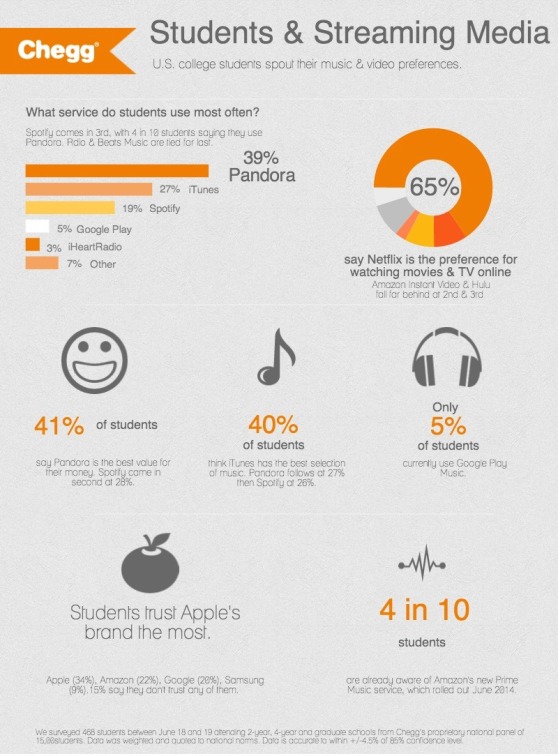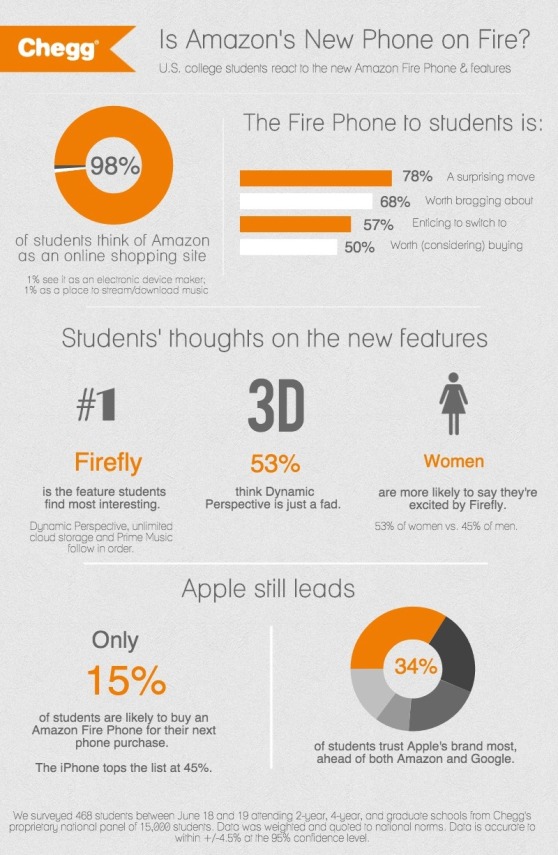July 8 – With online streaming options continuing to increase, and the big dogs snatching up music start-ups (or starting their own), we took a pulse of the student community to understand how and where this demographic prefers to get their music and movie content online.
Movie & TV Steaming
Netflix tops the list, with 65% of students using the service to watch movies & TV online. Only 9% of students claim Amazon Instant Video as their preferred channel, the same amount as those who prefer to download their movies for free through peer-sharing sites like BitTorrent.
Music Streaming
Perhaps most impressive is Amazon’s rise to the crowded music-streaming sector within such a short period. Since the company’s Prime Music announcement in early June, 4 in 10 students say they’re aware of the service, likely due to the company’s extensive reach to both students and parents.
Overall, Pandora reigns as the most popular music streaming service (42%), which was also dubbed the best value (41%). Spotify falls to second in popularity at 31%, then iTunes at 22%. Pandora also tops the list as the most used service at 39%. Beats Music, Rdio and Amazon’s Prime Music all rank last, with less than 3% combined actually using these services.
As a demographic expecting variety and personalization, the degree of music selection with these services is paramount. iTunes leads this category with 40% of students saying they have the best music selection, with Pandora following at 27%, then Spotify at 26%.
Brand Trust
Brand trust still sits in Apple’s camp, with 34% of students preferring the tech giant most. Amazon and Google follow in second and third place with 15% of students not trusting any of them.
Methodology:
We surveyed 468 students between June 18 and 19 attending 2 year, 4 year, and graduate schools from Chegg’s proprietary national panel of 15,000 students. Data was weighted and quoted to national norms. Data is accurate to within +/- 4.5% at the 95% confidence level.

